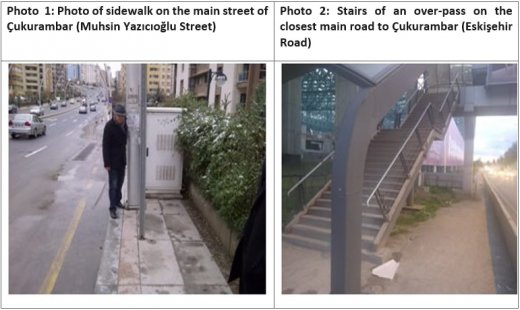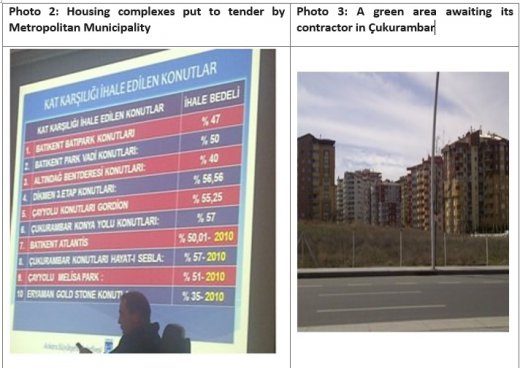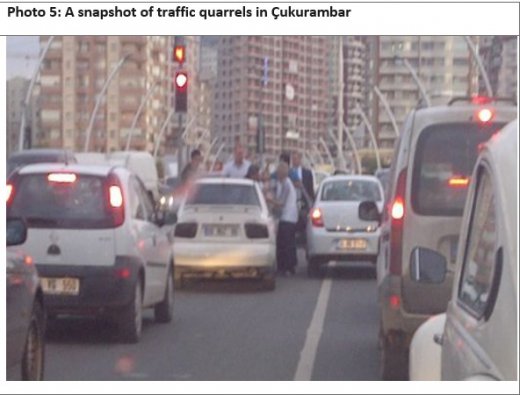Is the 2023 Vision Represented by Çukurambar?
Do you know the Çukurambar neighborhood in Ankara? Those living in here will know it, but it would seem familiar to many others, too. It is a slum in the middle of the city that underwent urban transformation in the last decade. The former jerry-built houses were replaced by tall buildings, some of which are luxurious and others ultra-luxurious. Since TEPAV lies only 5 minutes away from this odd neighborhood, we have been watching how Çukurambar has been transformed during the years of Turkey’s economic transformation. While we were discussing the country's middle-income trap, we witnessed how a nearby neighborhood climbed from low-income to high-income status, skipping the middle-income trap.
I wonder: if the entire country become like Çukurambar, would Turkey achieve its 2023 goals, that is, per capita income of 25,000 USD? Is that even possible? Should we want to transform every neighborhood in this way?
Let’s take a look.
My answer to the first question is “yes.” If the entire country consisted of neighborhoods like Çukurambar, then the per capita income could reach 25,000 USD, since the per capita income is already around 23,000 USD in Çukurambar. The good people at TurkStat have not released per capita income values at the regional or provincial levels, let alone the neighborhood level, since 2008. That’s why it fell to yours truly to calculate the per capita income in Çukurambar. How? First, I got the average monthly rental fee of 4+1 bedroom apartments from the Real Estate portal of Hürriyet newspaper. It’s 2,500 TL on average. You cannot find a 2+1 bedroom apartment in Çukurambar, since apartments usually have 4, 5, even 6 bedrooms. So, I took the rental fee of a 4-bedroom apartment, where a family with 3 children plus parents can comfortably live, as a base. Then I took the share of monthly household income spent for housing, as used by the Central Bank when calculating the CPI. It’s 15 percent. So, if 2,500 TL of rental expenditure accounts for 15 percent of monthly income, then the total monthly income would be 17,000 TL, in which case the annual income amounts to 204,000 TL (113,000 USD equivalent). So, the per capita annual income of 5 people living in that household amounts to 23,000 USD. That means that the 2023 goals are not too far off – Çukurambar is already there. If the entire country were like that, we could become a high-income economy and there would be no middle-income trap.
As for the second question, whether we can make the whole country like Çukurambar, I do not know the answer. I see, however, that the economic paradigm prevailing in Turkey believes it whole-heartedly. Both the new urban transformation regulations and the fact that our star industries are always construction-related, reveal that there is an implicit understanding that our economy would be great if only every neighborhood was like Çukurambar. This understanding reminds me of a ponzi scheme. As new rings are added to the scheme, it goes on to enrich those who enter it early on. New entrants, i.e., new neighborhoods in this case, become the income source of the preceding neighborhood. The inflowing hot money and the unearned income from land represent the primary elements of this scheme. So, when there is no ring left to add, the revenue from construction-based activities declines to zero, or in other words, when unearned income from land stops just like interest earning, how will people attain the income of 25,000 USD? Maybe we should analyze the economic histories of the South European countries in crisis today more closely, instead of only making fun of them. We may also look at the urban transformation in Diyarbakır from this perspective.
The third question was whether we would like to turn the whole of Turkey into Çukurambar. I sincerely hope not. Why? Let me use photographs rather than data to answer this question.
1. Because there are no sidewalks in Çukurambar. I have nothing to say if you interpret this simple sentence as there being no 100 cm wide pavement between buildings and the road. What I actually mean is that Çukurambar lacks an understanding that helps its residents live happily and in an urban manner. This is illustrated by the first photograph below. How can a mother with three children, holding one in her arm, the other’s hand, and pushing the third in a stroller, stay on a sidewalk on which even a single person cannot properly walk? Or is the government allocating an SUV with a driver so that mothers with three children can travel comfortably, with all three children sitting on the back seats? Something is seriously wrong if this is a sidewalk on the main street of Çukurambar, where the monthly rental cost is 3,000-4,000 TL and where it costs 50 TL per person to eat in a restaurant. The second photograph below is just one of the thousands of pieces of evidence that you have no room for movement in the city if you are a disabled citizen or simply do not own a car.

Because there are no green spaces in Çukurambar. One of the basic differences between Turkish cities and the cities of the advanced countries of the world is the abundance of parks people can reach on foot, not by car. I understand that our cities grew in an unplanned manner in the past and that we neglected green areas. But how can we explain the lack of a proper park in Çukurambar, a neighborhood practically built in the last ten years, in place of shanty houses? (Those houses by the way, had some pretty neat gardens) There are two photos below. One depicts a slide in a presentation by which Ankara’s Mayor described his city with pride. It shows how the Ankara Metropolitan Municipality gave lands to contractors in exchange for apartments at high rates and thus protected the rights of citizens. He said, “We demolished shantytowns, cleared lands and gave them to contractors in exchange for apartments, where the Municipality got a share of 57 percent and the contractor 43 percent.” At least they could have reserved some land as parks for the happiness of the people living there. And they could have reserved some space for sidewalks. The other photo below is the only large green space in Çukurambar. It’s located on the main street. As you can see, it is surrounded by a fence and is covered in bushes. Since I can see no cows grazing in the vicinity, it most probably awaits appreciation before a building is erected on it.

Because transportation is disastrous in Çukurambar. Population density has increased by tenfold in Çukurambar; single floor shanty houses have been replaced by apartment buildings with a minimum of 10 stories. But what has been done to relieve traffic during this process? Nothing! I don’t know where the Metropolitan Municipality spent the funds raised from this neighborhood, but it’s clear that it didn’t go into a metro connection to Çukurambar. As a result, Çukurambar has three rush hours a day (morning, noon, and evening) with a density comparable to that in Istanbul. We could not bring the beauty of Istanbul to Çukurambar, but we finally managed to bring its traffic culture. The photo below shows a bumper-to-bumper struggle descending into a street fight in the middle of Çukurambar. Truly, a snapshot of happiness, isn’t it? Tall buildings in the background, cars waiting on the street and quarreling people.

If a per capita income of 25,000 USD alone brings happiness, let’s turn the whole country into Çukurambar. If this is not the way to ensure real happiness, we must start discussing how we can change the prevalent economic paradigm, based on creating new Çukurambar neighborhoods similar to the functioning of ponzi schemes.
In the early 2000s, we managed to move away from the system of the 1990s, based on unearned interest profits. I wonder when we will overcome the system of unearned land profits.
Esen Çağlar, Economic Studies, Analyst




